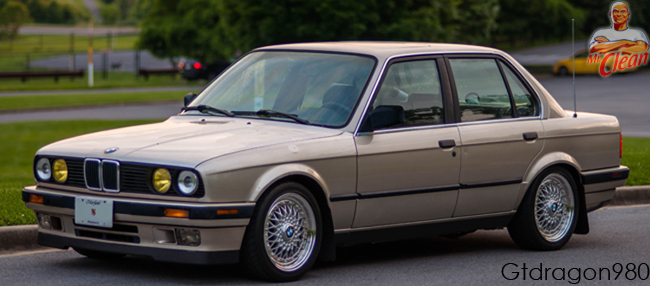
There have been five generations of the BMW 7 Series. The current 7 Series was completely redesigned for 2009. In that first year, it could only be had as the 750i and 750Li models with rear-wheel drive. Compared to the previous model, it is considered significantly more visually pleasing. The bodywork is tauter and the trunk lid has a slimmer look. The interior is also more traditional in design (the gear selector is now on the center console rather than the steering column) and the iDrive electronics interface is vastly improved versus past editions. The 760Li arrived for 2010, while the 740i debuted the following year, becoming the first six-cylinder-powered 7 Series in 20 years. The previous-generation BMW 7 Series was produced from 2002-'08 and was by far the most radical version of the nameplate. Traditional exterior styling cues from the previous 25 years were largely abandoned in favor of a more aggressive, avant-garde design. The car was still recognizable as a BMW 7 Series, but many purists found the look abrasive. A refresh for 2006 smoothed out some of the harsher elements, but it's still a stretch to call this car beautiful, whether in standard-wheelbase 750i form or long-wheelbase 750Li and 760Li form (it was previously known as iL).
With the exception of 2002 when only a V8 was offered, the fourth-generation 7 Series lineup always included sophisticated eight- and 12-cylinder engines paired with a six-speed automatic transmission. The 745i and 745Li sold from 2002-'05 were equipped with a 325-hp 4.4-liter V8, while the 750i and 750Li that succeeded them had a 360-hp 4.8-liter V8. The 750s were slightly heavier, so performance was about the same as for the 745s.
Offered continuously from 2003, the 760Li had a 6.0-liter V12 capable of 438 hp. Unlike the V8s, which are eager to rev, the V12 delivers a massive wave of thrust as soon as you nudge the accelerator pedal. BMW offered a short-wheelbase 760i from 2004-'06.
The modernist exterior styling of this generation carried on in the cabin, where BMW's typically button-heavy control layout gave way to an all-in-one system called iDrive that governed climate, audio and navigation functions via a single console-mounted dial and a central display. Although iDrive assured the 7's place in the information age, its steep learning curve proved bewildering for many a 7 Series driver. During this 7's lifespan, iDrive was consistently upgraded, so newer 7 Series will come with the later (and less maddening) versions of this control device. Make sure to thoroughly examine iDrive before purchasing a 7 Series, or at the very least, driving it off the lot.
Even though it tended toward the esoteric, the 2002-'08 BMW 7 Series proved quite popular, largely because of its superb driving experience. Here BMW applied its arsenal of technology to great advantage, as features like self-stiffening antiroll bars, self-leveling air springs and adaptive shock absorbers worked together to keep the big sedan stable when driven hard.
The third generation, sold from 1995-2001, is generally regarded as the finest era for the 7 Series. It was a true driver's car just like today's 7, but there was less in-car technology to distract from the task at hand. And most people agree that its sleek, classically styled body was easier on the eyes.
Provided the car is in good condition, any 7 Series from this generation would make a fine purchase. Quality was generally excellent on these cars, but like most high-end German products, repair costs can be hefty as they age. The main advantage to choosing a car from later in the model cycle is added standard feature content. BMW's Dynamic Stability Control system, for example, debuted across the line for 1998.
The model lineup included the regular-wheelbase 740i sedan, which was offered every year except 1996, and the long-wheelbase 740iL and 750iL, which had an uninterrupted run. The BMW 740s were powered by a 282-hp 4.4-liter (4.0-liter in 1995) V8, while the 750iL had a 5.4-liter V12 good for 326 hp. All 7s came with a five-speed automatic transmission. Either setup provided strong acceleration, but fuel economy was poor by today's standards.
Similar in style and focus to its successor, the second-generation BMW 7 Series was on sale from 1988-'94. This was the first 7 Series to include both regular- and long-wheelbase models, the advantage to the latter being increased rear legroom. For most of the cycle, the base engine was a 208-hp 3.4-liter inline six-cylinder offered in 735i and 735iL models. A four-speed automatic transmission was standard, but a five-speed manual was offered as well. The 282-hp 4.0-liter V8 replaced the inline-6 in 1993, yielding the 740i and 740iL, both of which took a five-speed automatic only. The BMW 750iL was offered throughout the run. The first V12-equipped BMW, it had a 296-hp 5.0-liter engine and a four-speed automatic.
The first-generation BMW 7 Series enjoyed a long run from 1978-'87. It was the largest sedan the company had ever built and directly targeted the Mercedes-Benz S-Class. All 7s of this era were powered by an inline six-cylinder engine.





Comment